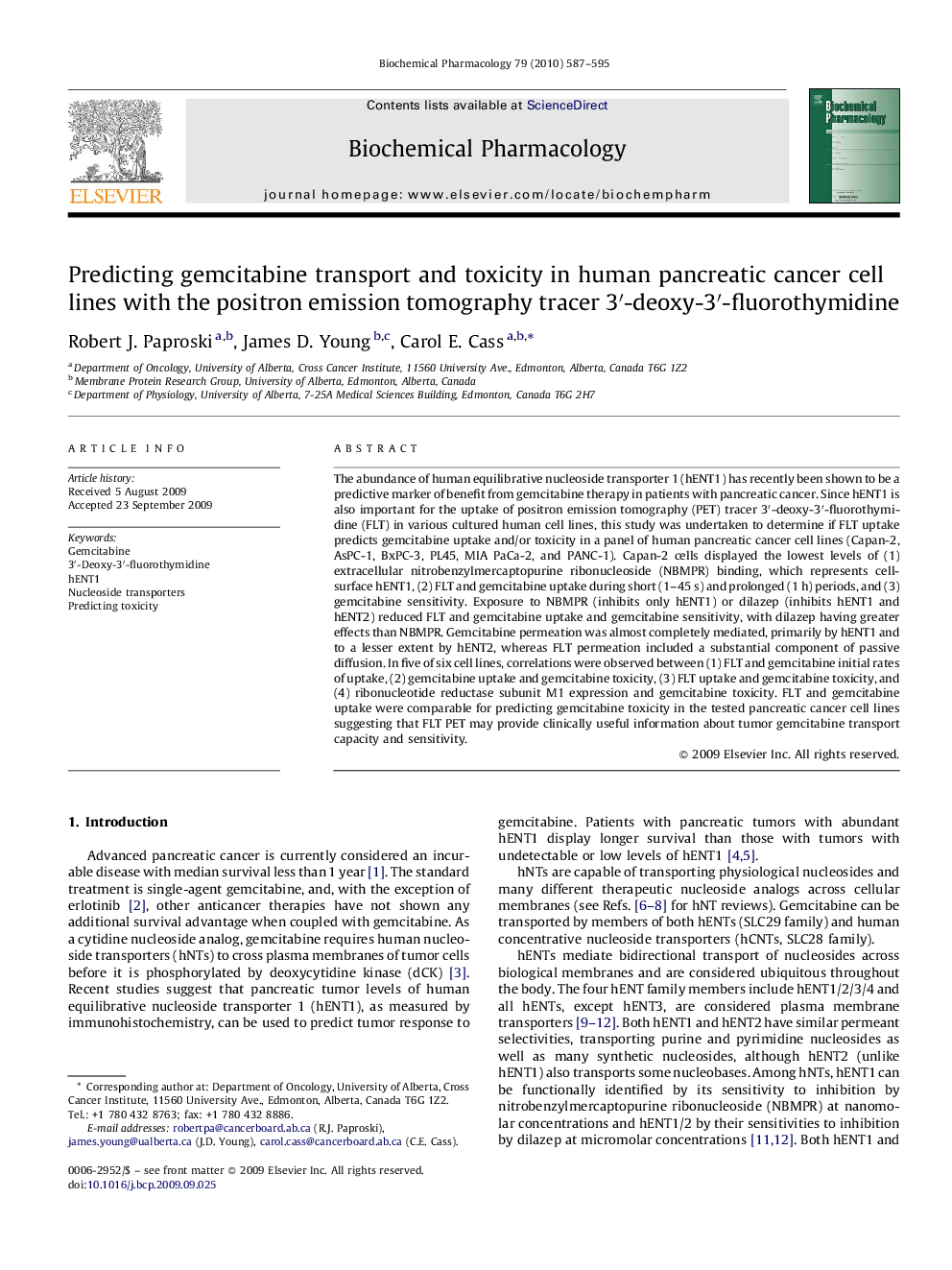| Article ID | Journal | Published Year | Pages | File Type |
|---|---|---|---|---|
| 2513631 | Biochemical Pharmacology | 2010 | 9 Pages |
The abundance of human equilibrative nucleoside transporter 1 (hENT1) has recently been shown to be a predictive marker of benefit from gemcitabine therapy in patients with pancreatic cancer. Since hENT1 is also important for the uptake of positron emission tomography (PET) tracer 3′-deoxy-3′-fluorothymidine (FLT) in various cultured human cell lines, this study was undertaken to determine if FLT uptake predicts gemcitabine uptake and/or toxicity in a panel of human pancreatic cancer cell lines (Capan-2, AsPC-1, BxPC-3, PL45, MIA PaCa-2, and PANC-1). Capan-2 cells displayed the lowest levels of (1) extracellular nitrobenzylmercaptopurine ribonucleoside (NBMPR) binding, which represents cell-surface hENT1, (2) FLT and gemcitabine uptake during short (1–45 s) and prolonged (1 h) periods, and (3) gemcitabine sensitivity. Exposure to NBMPR (inhibits only hENT1) or dilazep (inhibits hENT1 and hENT2) reduced FLT and gemcitabine uptake and gemcitabine sensitivity, with dilazep having greater effects than NBMPR. Gemcitabine permeation was almost completely mediated, primarily by hENT1 and to a lesser extent by hENT2, whereas FLT permeation included a substantial component of passive diffusion. In five of six cell lines, correlations were observed between (1) FLT and gemcitabine initial rates of uptake, (2) gemcitabine uptake and gemcitabine toxicity, (3) FLT uptake and gemcitabine toxicity, and (4) ribonucleotide reductase subunit M1 expression and gemcitabine toxicity. FLT and gemcitabine uptake were comparable for predicting gemcitabine toxicity in the tested pancreatic cancer cell lines suggesting that FLT PET may provide clinically useful information about tumor gemcitabine transport capacity and sensitivity.
Graphical abstractFigure optionsDownload full-size imageDownload as PowerPoint slide
